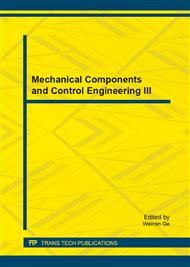p.56
p.60
p.64
p.70
p.74
p.79
p.83
p.87
p.91
Study on the Critical Control of Foam Insulation Materials Produced by Waste TFT-LCD Glass
Abstract:
The present work studied the critical control of foam insulation materials produced by waste TFT-LCD glass. The result showed that foam glass was affected by sintering temperature, as well as other factors such as foaming agent, oxygen supply agent and reaction time. The ordinary waste glass was used to drop the melting temperature of Waste TFT-LCD glass. The density of foam glass had a down-up trend with the increase of sintering temperature. The increase of ratio of foaming agent and oxygen supply agent led to a notable decrease of the density, while the change of reaction time exerted an unobvious influence on the density. The density of foam glass produced under the optimal conditions was 0.2211 g/cm3.
Info:
Periodical:
Pages:
74-78
Citation:
Online since:
October 2014
Authors:
Price:
Сopyright:
© 2014 Trans Tech Publications Ltd. All Rights Reserved
Share:
Citation:


